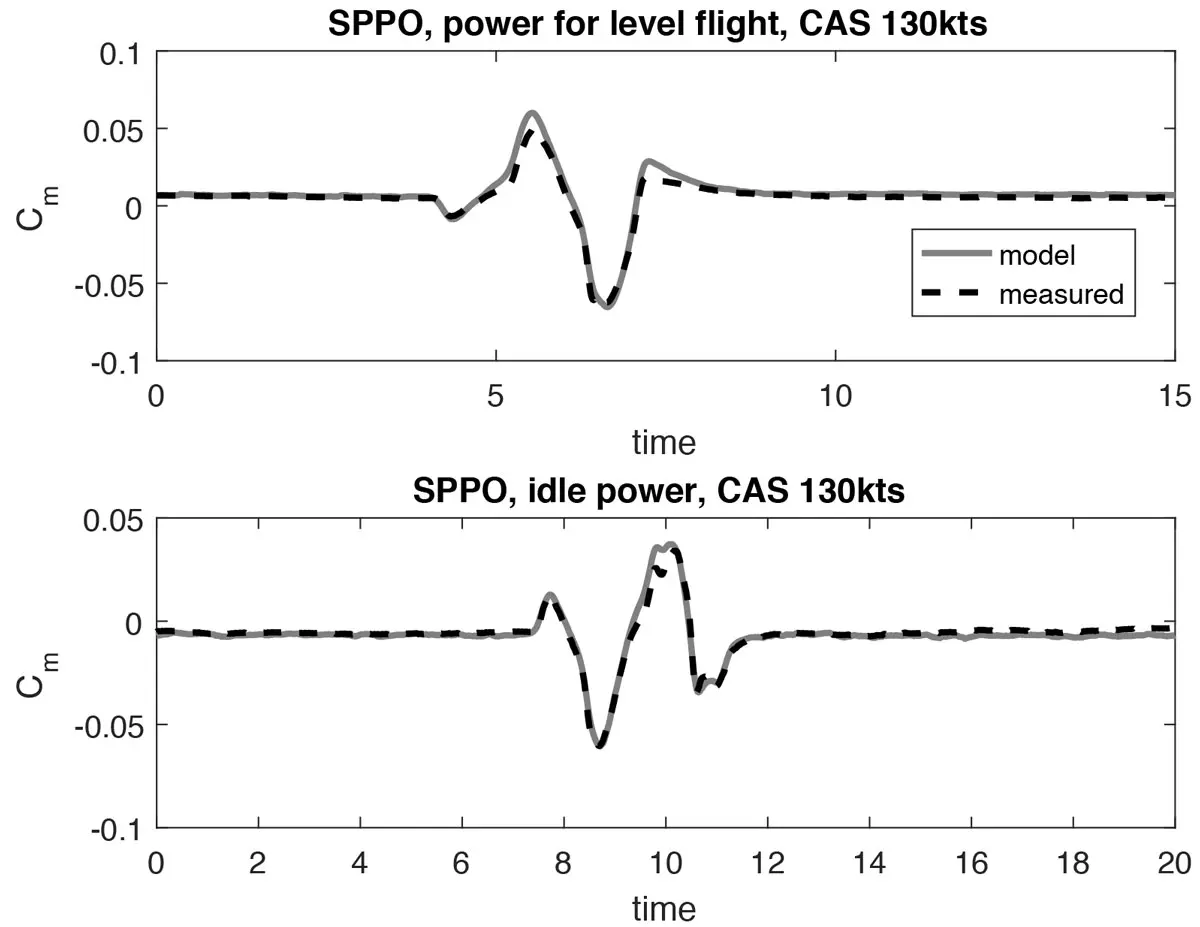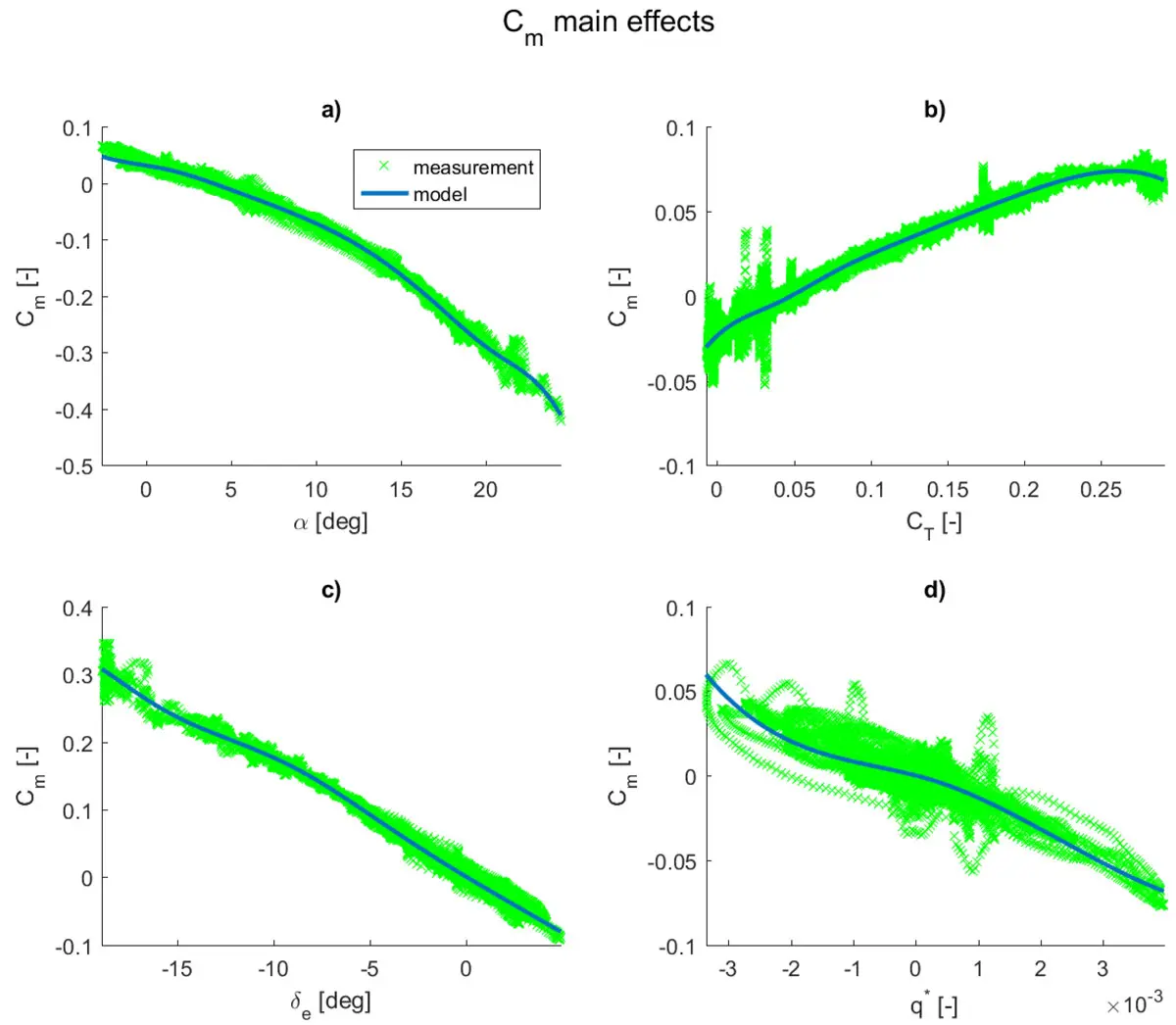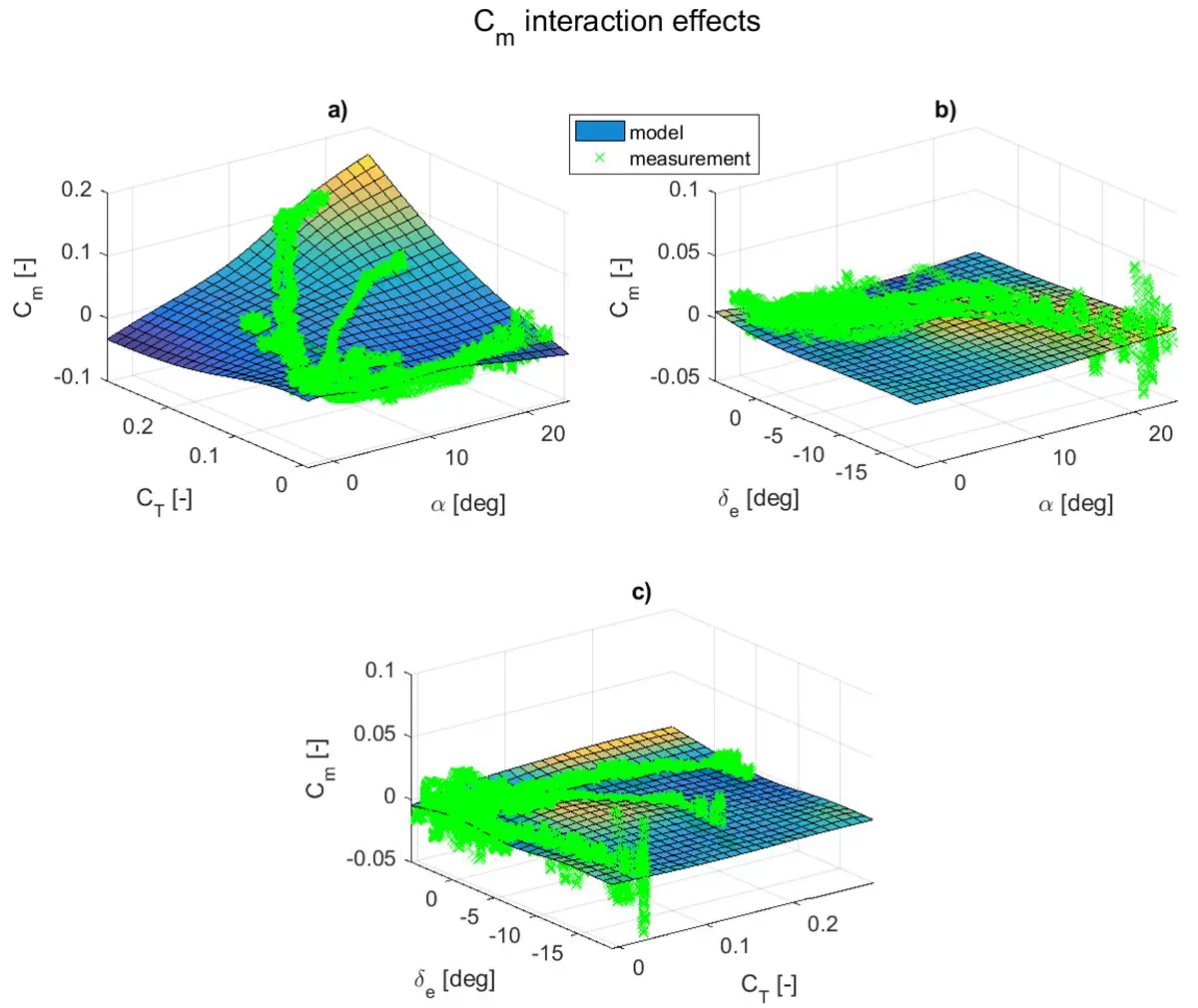MSc thesis: Flight simulation model from flight test data
Aerodynamic model with generalised additive models

The dynamic behaviour of an aircraft, as well as the forces on the flight control that can be felt by pilots, can be represented using flight simulation models. These are based on mathematical formulations that are usually parameterised using wind tunnel and flight test data. Within the framework of an MSc thesis, an innovative approach was used that models aerodynamics using generalised additive models (GAMs) from flight test data.
Flight simulation models are used when training pilots, for developing and adjusting flight control systems and autopilots, and for predicting the performance and flight guidance qualities of new aircraft. Flight simulation models are based on a mathematical description of the aircraft to be simulated and are generally parameterised using measured data from wind tunnels and flight tests or computational fluid dynamics (CFD) data. This parameterisation process is extremely complex and time-consuming.
In an MSc thesis conducted at the Centre for Aviation in cooperation with the University of Zagreb, an innovative approach based on generalised additive models (GAMs) was used. GAMs allow non-linear models to be adjusted to the afore-mentioned data. This includes non-linear “smooth” functions which, in an additive model, can be adjusted to the data.
"GAM is a fascinating field of activity and offers significant potential in the area of aerodynamic modelling."
Pierluigi Capone, Head of Flight Mechanics and Flight Control Systems team
Example: Modelling of the pitching moment coefficient
To demonstrate how GAM works, a model of the pitching moment coefficient of a two-seater general aviation aircraft was developed. The pitching moment coefficient plays a significant role in flight behaviour since it describes how the aircraft raises and lowers its “nose”. This movement depends on the elevator deflection, angle of attack and speed, among other factors.
The flight test data on which the GAM is based was collected by the ZHAW during a flight measurement survey in 2016 and comprises more than 1,000 test points.
The model developed includes the influence of the angle of attack, the thrust coefficient and the elevator deflection (see figures on the left), among other factors.
Conclusion

The MSc thesis showed that GAM provides an intuitive and simple method for the development of aerodynamic models based on flight test data. The accuracy of the GAM-based models was validated using an independent flight test data set (see figure). Here, it was confirmed that the flight simulation model corresponds well to the real behaviour of the aircraft. In addition, GAM represents a practical and intuitive tool for providing developers an overview of the data and connections.
The results of this MSc thesis were published in a scientific article entitled “Determination of model structure from flight test with generalized additive models”.

